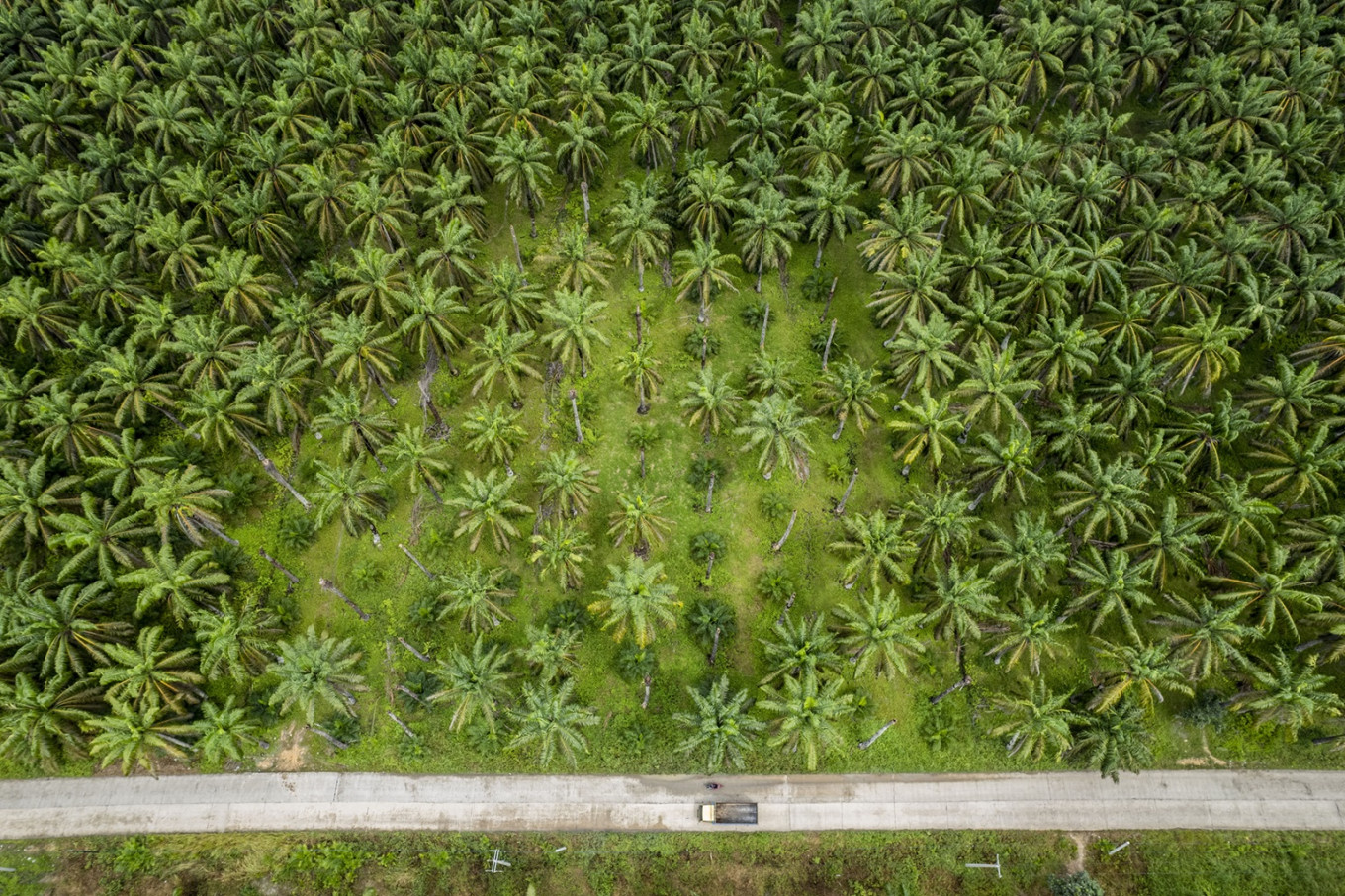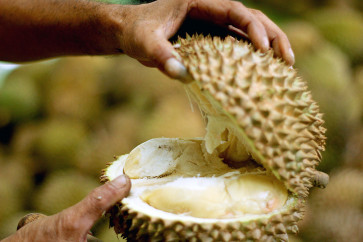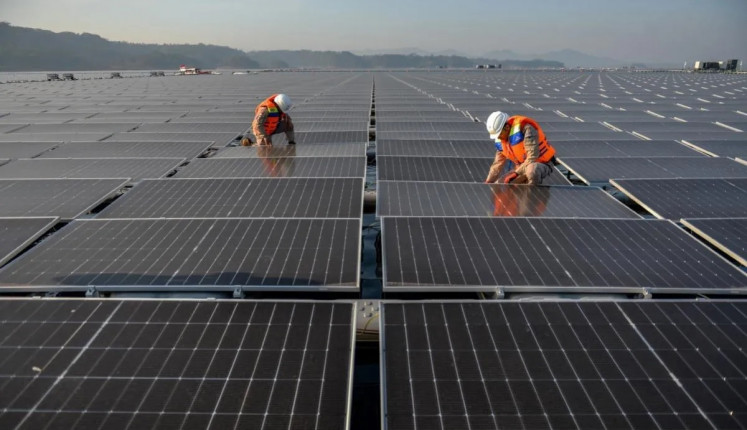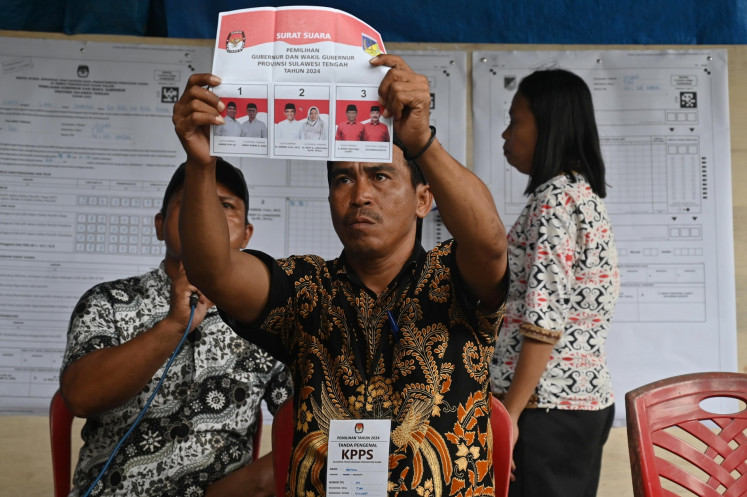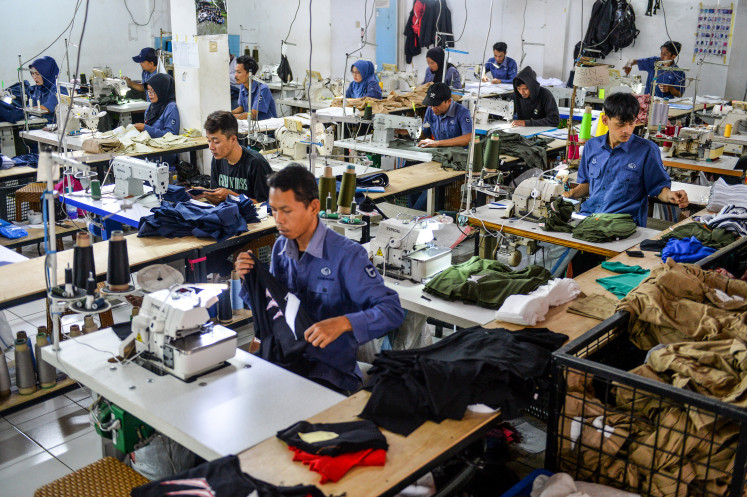Popular Reads
Top Results
Can't find what you're looking for?
View all search resultsPopular Reads
Top Results
Can't find what you're looking for?
View all search resultsPalm plantations cannot replace forests, Mr. President
Prabowo’s claim that oil palm plantations can replace forests is fundamentally flawed when viewed through ecological, climatic and societal lenses.
Change text size
Gift Premium Articles
to Anyone
P
resident Prabowo Subianto marked the end of 2024 with a controversial statement. On Dec. 31, 2024 this newspaper quoted him as saying: "I think, in the future, we also have to increase oil palm plantations. We don’t have to be afraid of endangering, what is it called, deforestation, right?"
He further added, "They say it is threatening the environment, leading to deforestation. Oil palm is a tree, right?"
Between 2001 and 2020, Indonesia lost approximately 27.7 million hectares of tree cover (roughly equivalent to the size of New Zealand), accounting for a 17.3 percent reduction from its 2000 extent, according to Global Forest Watch.
The primary drivers of this massive loss were oil palm expansion, logging and mining. It is important to note that "tree cover loss" includes both deforestation and other forms of tree loss, such as natural disturbances and sustainable forestry practices.
Indonesia's rapid deforestation has ranked the country among the top carbon emitters from land-use changes. Reports from CarbonBrief reveal that peatlands, which store massive amounts of carbon, are often drained and burned for oil palm plantations, releasing substantial amounts of greenhouse gases.
Additionally, studies highlighted by ArcGIS emphasize that deforestation has severely impacted endangered species such as orangutans, Sumatran tigers and rhinos, whose shrinking habitats underline the urgency of protecting Indonesia's biodiversity.
Critics, including green groups like Indonesian Forum for the Environment (Walhi), argue that Indonesia’s forestry policies lack effective enforcement, enabling illegal logging and land clearing to persist. Walhi has highlighted that despite laws and moratoriums aimed at protecting forests, systemic weaknesses in enforcement have allowed significant forest loss to continue.
Reports from NGOs and international observers further critique the government for prioritizing short-term economic gains, such as oil palm expansion, over long-term environmental sustainability. This dynamic has created tension between advancing economic development and safeguarding Indonesia's globally significant ecosystems.
Yet, this perspective fails to address an essential distinction. Prabowo’s claim that oil palm plantations can replace forests is fundamentally flawed when viewed through ecological, climatic and societal lenses. While a plantation may contain trees, it lacks the complexity and functionality of natural forests, a critical difference that underpins the broader environmental and societal consequences of deforestation.
Natural forests sequester two to three times more carbon than oil palm plantations, storing this carbon in both biomass and soil, and acting as one of the planet's most effective carbon sinks. In contrast, oil palm plantations sequester only a fraction of this carbon and release vast amounts of carbon dioxide (CO2) during their establishment, particularly when peatlands are drained or burned.
Peatlands alone can release up to 55 times the stored carbon during their conversion to plantations, making oil palm cultivation a net carbon emitter during its initial years. The En-ROADS climate simulation further highlights that even afforestation or replanting cannot fully offset the immense emissions caused by large-scale deforestation.
Biodiversity loss is another critical disparity. Indonesia’s rainforests host over half of the world’s terrestrial species, including orangutans and Sumatran tigers. These ecosystems are intricately balanced, supporting not only large fauna, but also the microbial life essential for soil and plant health.
Oil palm plantations, by contrast, support less than 10 percent of the biodiversity found in natural forests, reducing rich ecosystems into biologically impoverished monocultures. The En-ROADS climate simulation underscores how biodiversity losses weaken ecosystem resilience, linking reduced species diversity to a diminished capacity to adapt to climate shifts and mitigate natural disasters.
Soil and water quality also deteriorate significantly in monocultures. Natural forests protect and enrich soil through organic matter recycling, maintaining fertility over centuries. Oil palm plantations strip the soil of nutrients, necessitating heavy fertilizer use that leads to further degradation.
Additionally, water systems near plantations are often polluted by agricultural runoff, disrupting aquatic ecosystems and reducing water availability for nearby communities. The En-ROADS model highlights how these disruptions magnify local climate impacts, such as increased drought and flood risks.
The En-ROADS climate simulation further demonstrates that deforestation significantly accelerates climate change by releasing large quantities of CO2 stored in trees and soil. Replacing forests with monoculture plantations disrupts this balance, as these plantations contribute minimally to climate stabilization when compared to natural forests.
When forests are replaced by oil palm plantations, it is not just trees that are lost, but entire ecosystems. The disappearance of forests reduces rainfall, disrupts local and regional climates and exacerbates extreme weather events. Indigenous communities, whose livelihoods and cultural identities are intricately linked to forests, are often displaced, creating social and economic tensions.
Comparing Indonesia’s approach to palm oil production with other nations highlights critical gaps and opportunities. Malaysia, while facing similar pressures, enforces stricter sustainability regulations through its Malaysian Palm Oil Certification Council (MPOCC). Although not without flaws, Malaysia’s approach to balancing oil palm expansion with biodiversity conservation demonstrates the importance of integrating sustainability into national policy.
However, stricter regulations alone are insufficient. System dynamics approaches reveal that integrating economic incentives with robust enforcement mechanisms is vital to realigning feedback loops for sustainable outcomes. This approach highlights the deeper interdependencies between economic incentives, governance and global markets.
Public advocacy and awareness campaigns are pushing for better governance, putting pressure on the government to follow sustainable practices that counter deforestation drivers. All of this shows that we need systemic interventions that address economic, environmental and social factors all at once.
Another reinforcing loop is tied to global certification demand. The interaction between certification standards and governance systems becomes critical. Weak enforcement undermines certification, reducing their potential to effectively counter unsustainable practices.
There are some policies that focus on using degraded land. When degraded lands are incentivized for agricultural expansion, deforestation pressures on pristine forests decrease. This approach not only preserves biodiversity, but also boosts agricultural productivity.
However, for these balancing mechanisms to succeed, they must be supported by strong institutional frameworks, effective monitoring systems and sustained financial investments. Addressing these challenges requires moving beyond oversimplifications and fostering informed, science-driven policies that align economic development with environmental sustainability.
For Indonesia to lead on the global stage, it must show that economic development and environmental stewardship can coexist. Failing to act risks losing valuable ecosystems permanently, trading long-term environmental stability for short-term economic benefits at the expense of future generations.
***
The writer is an En-ROADS climate ambassador, alumnus of Harvard Business School and affiliated alumnus of MIT Sloan School of Management.

